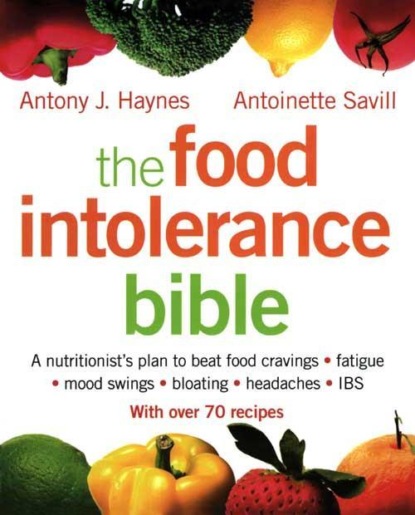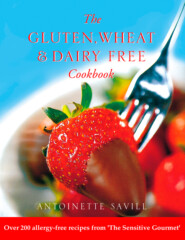По всем вопросам обращайтесь на: info@litportal.ru
(©) 2003-2024.
✖
The Food Intolerance Bible: A nutritionist's plan to beat food cravings, fatigue, mood swings, bloating, headaches and IBS
Автор
Год написания книги
2019
Настройки чтения
Размер шрифта
Высота строк
Поля
27 potatoes (nightshade)
28 rye (gluten grain)
29 sheep’s cheese and milk
30 soy
31 sweet green peppers (nightshade)
32 sweet red peppers (nightshade)
33 sugar
34 tomatoes (nightshade)
35 vinegar
36 wheat (gluten grain)
37 yeast
38 tea
39 coffee
40 all gluten grains
41 all members of the nightshade family
42 all food additives
43 all food preservatives
44 all artificial colours
45 tobacco
With the exception of gluten and sugar, preservatives, additives and artificial colours, if it turns out you were not intolerant to any of these, you can of course still eat them. While you are finding out which if any of these culprits apply to you, you can continue to enjoy Antoinette’s recipes, which contain none of these ingredients.
While this is the most comprehensive attempt yet to prepare recipes that omit foods that might trigger an adverse reaction, the recipes are still not going to be suitable for everyone, so please be warned. We have not avoided all nuts and seeds, for example. In addition, there are bound to be individual items not in this list that a test may identify as a problem for you. If this turns out to be the case, we hope that it will be possible for you to identify the recipes that include this culprit and choose different meals, or be able to replace that individual ingredient.
To help alert you to the most likely culprits within this list, here are the Top Five Usual Suspects to consider as a trigger for your symptoms:
1. cow’s-milk products
2. gluten grains (wheat, oats, rye, barley)
3. soy
4. sugar
5. yeast
For children the list is slightly different:
1. cow’s-milk products
2. food additives and colourings
3. gluten grains (wheat, oats, rye, barley)
4. sugar
5. yeast
This ‘Usual Suspects list’ will be referred to throughout this book.
Now, your next task is to find out if you are suffering from food intolerance.
The Food Intolerance Questionnaire
If you regularly have any of the 80-plus symptoms on the following questionnaire, this could be a sign that you have a food intolerance, particularly if you know of no other reason why your symptoms might be present. Since you have already chosen to read this book you may already be wise to this possibility. Perhaps this list could also help a family member or friend who you know suffers from symptoms but does not know the cause.
Please complete the questionnaire below and see what the score reveals. The questionnaire can also be printed out directly from the website:
www.thefoodintolerancebible.com.
Be sure to see your doctor if you have any persistent health problem so that it can be investigated medically. Just because you have one or more of the symptoms below does not mean that they must be caused by an adverse reaction to certain foods.
If you answer ‘yes’ to any of the following, score one or two points depending on the specific question (some symptoms are more relevant to food intolerances, so they score 2 points), as shown below.
SECTION ONE – DIGESTIVE SYMPTOMS
Do you suffer on a regular basis (i.e. more than 3 times a week) from any of the following?
abdominal bloating/distension (2)
abdominal cramps (2)
abdominal or stomach pain (2)
burping after eating certain foods
catarrh (mucus) (2)
difficulty gaining weight
difficulty losing weight







